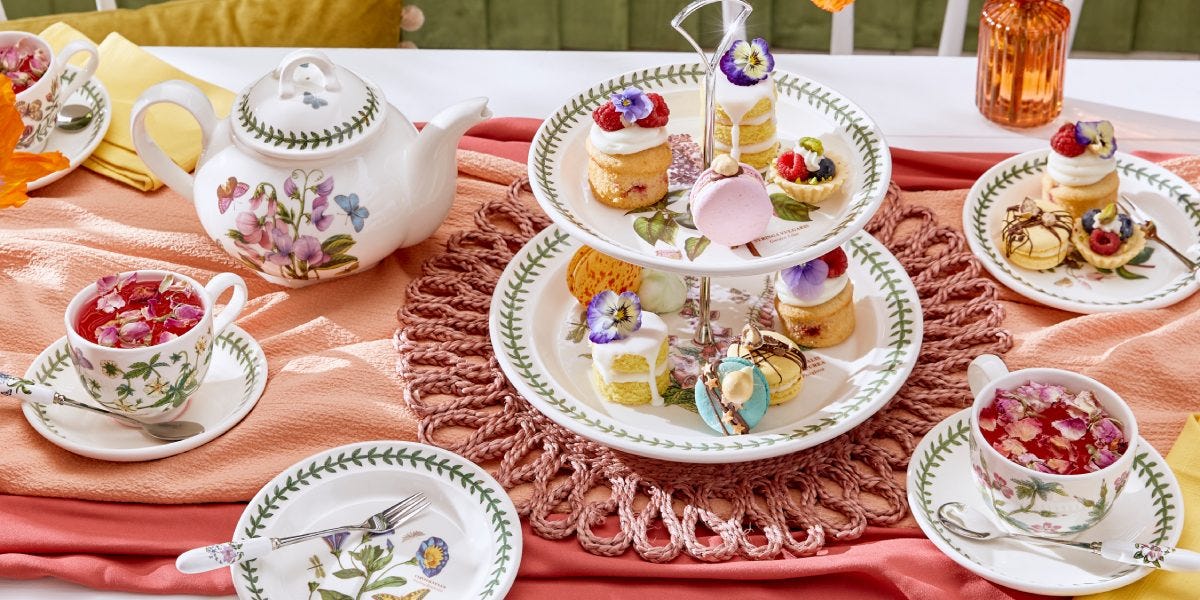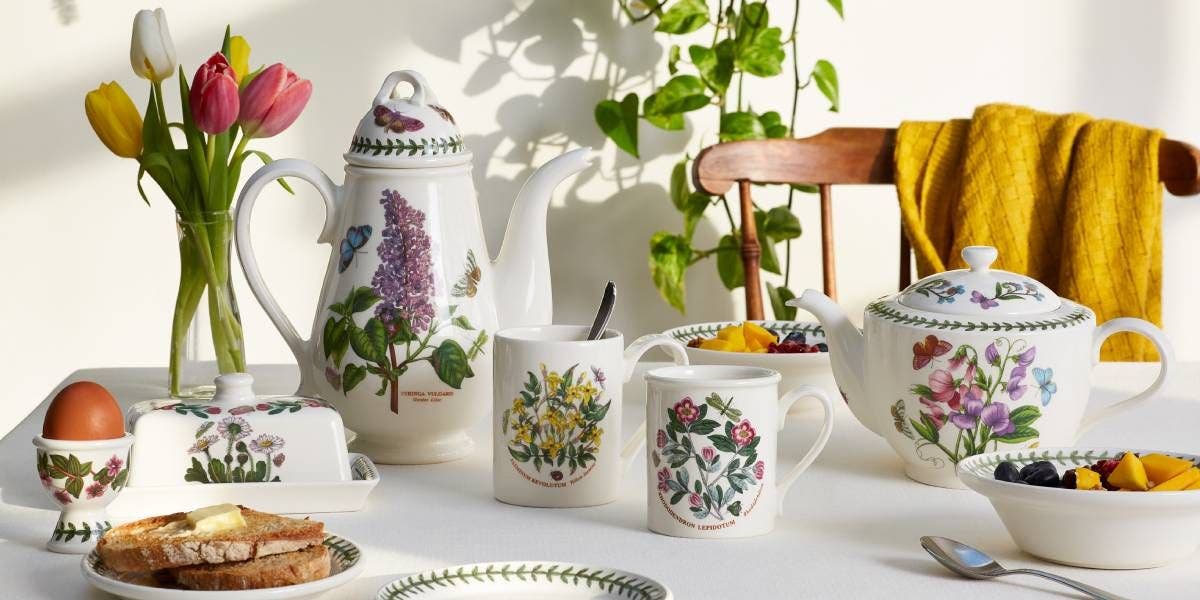
When you buy a new tableware set or ceramics piece, you want it to last and be in your collection for as long as possible. To maintain the appearance and functionality of your Portmeirion tableware, it’s important to follow the right care and use suitable for each piece. Follow our guide below for top tips on looking after your Portmeirion ceramics and avoiding any unwanted faults:
How to clean your tableware
Our earthenware, porcelain and fine bone china tableware are easy to clean either by hand or using a dishwasher. You’ll find the suitable cleaning method for your Portmeirion china detailed on the product’s web page, on the packaging or the backstamp (underside of the piece).
It’s often best to wash all dirty dishes as soon as possible, but if time doesn’t allow or you’re busy entertaining guests, rinsing off any residues with a damp cloth to stop food from hardening is recommended. Using an abrasive material to remove left-over food isn’t suitable, and you should avoid soaking items in water, as this may result in crazing – spider web-like cracks that result from water soaking into the ceramic body and expanding when heated in a high dishwasher temperature cycle.
All our crockery collections can be washed by hand, and we recommend using conventional hand-wash detergents with hot water and a soft sponge to do so. Once washed, rinse under clean, warm water, drain and dry with a clean tea towel.


Using a dishwasher to clean your tableware
Dishwashers have become a staple part of the modern home and can be used to clean any Portmeirion ceramics that are stated to be ’dishwasher safe’. Pre-clean your ceramics by rinsing off any residues with a damp cloth, then place the items in the dishwasher so that they are not in contact with any other item or surface. Any metallic items, such as cutlery, should be loaded separately from the ceramic pieces.
To maintain the appearance of your Portmeirion crockery, do not exceed a dishwasher cycle temperature of 60°C, and ensure that you use a suitable detergent and the correct dosage that is compatible with your dishwasher. A mild liquid detergent will be less abrasive on ceramic items than powder or tablet forms that don’t dissolve properly.
Once the cycle has finished, open the dishwasher door to prevent any condensation from forming on the ceramics. We recommend allowing your ceramic ware to air dry rather than within the dishwasher chamber but do not stack the hot or wet pieces on top of each other.
In some instances, after washing your ceramics in the dishwasher, they may have a film-like layer on the surface. This can be caused by many factors, but the most common causes include using the incorrect dosage of detergent or rinse aids, along with leaving the ceramics to dry inside the dishwasher. If this coating appears on your tableware, remove using a mild abrasive cleaner that has been specifically developed to be used with glass or enamel surfaces.
Storing your tableware
Store and display your ceramics in areas where there is less traffic to avoid the risk of them being knocked and broken. Display cabinets, particularly glass ones, are perfect for this and will also help to protect them from dust.
Plate racks, either built into open shelving or placed within kitchen cupboards, are great for storing plates of different sizes, making it easy to access the dishes, especially when you have a large collection.


If you’re storing your ceramics away for a longer period, wrap them in acid-free tissue paper and bubble wrap, using masking tape to secure them. Store any wrapped pieces in plastic boxes away from damp environments.
If you’ve found this guide to looking after your ceramics useful, you may enjoy our other guides too:












































